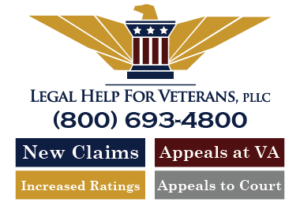Jesse L. Brown &Thomas Hudner
No Man Should Die Alone!
Written by C. Douglas Sterner
 Eight thousand badly outnumbered Marines shivered in the sub-zero temperatures of the Chosin Reservoir in North Korea on December 4, 1950, as eight F4U-4 Corsairs left the deck of the carrier USS Leyte. Each of the eight heavily armed but outdated fighters was piloted by a Naval aviator rushing to defend their comrades on the ground. Most of the pilots were young, in their early twenties, but all were dedicated "brothers in arms" who would risk their lives for the soldiers on the ground, men they didn't even know, but defended because they were Americans at great risk.
Eight thousand badly outnumbered Marines shivered in the sub-zero temperatures of the Chosin Reservoir in North Korea on December 4, 1950, as eight F4U-4 Corsairs left the deck of the carrier USS Leyte. Each of the eight heavily armed but outdated fighters was piloted by a Naval aviator rushing to defend their comrades on the ground. Most of the pilots were young, in their early twenties, but all were dedicated "brothers in arms" who would risk their lives for the soldiers on the ground, men they didn't even know, but defended because they were Americans at great risk.
Lieutenant Commander Richard Cevoli led his squadron inland, over the rugged mountains of North Korea just north of the Chosin Reservoir. The eight fighters skimmed 1,000 feet above the snow-covered terrain, eyes alert for the movement of enemy troops. It was a general support mission, one of many Naval pilots had been flying recently to give air cover to the withdrawing Marines below. Cevoli's pilots had been flying over Korea for only about two months, but in that short time, they had become skilled combat veterans. They had also become close, like brothers.
Off in the distance flying "wing" for Ensign Jesse Brown was Lieutenant (j.g.) Thomas Hudner. Hudner was senior to Brown, but the Ensign had more experience. In the perilous skies over North Korea, rank didn't matter. It was experience that counted. The two pilots were good friends, though they had little more in common than a boyhood fascination with airplanes and a determination to someday soar above the clouds. Their dream had come true. That dream had also become a nightmare of death and destruction. On this day they would confront the nightmare once again, and Lieutenant Hudner would do all the wrong things because it was right.
Thomas Hudner was born in Massachusetts on August 31, 1924; the son of a successful Irish businessman. Though by no means rich, the family lived comfortably in their hometown of Fall River where Tom's father ran Hudner's Markets, a chain of grocery stores. In school, Tom was a fair student whose primary interests were athletic. His grades were sufficient to qualify him for the U.S. Naval Academy where he graduated in 1946. After serving time on the USS Helena, Tom finally made his dream of flying come true. He received the wings of a Naval aviator in August 1949, and in November he joined Fighter Squadron 32 aboard the USS Leyte in the Mediterranean.
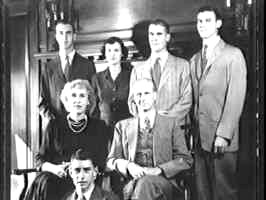 One of the "old hands" Tom Hudner met upon joining Fighter Squadron 32 was Jesse LeRoy Brown. As Tom came to know Jesse, the two became good friends. Two years younger than Tom, Jesse had earned his wings a year earlier, in October 1948. Seven months before Thomas had joined the squadron, Jesse was commissioned an Ensign. But despite the boyhood dream of flying both young men shared, the two could not have been more different. It was this difference that generated Tom's immense respect for the junior officer, and that cemented a bond of brotherhood between the two.
One of the "old hands" Tom Hudner met upon joining Fighter Squadron 32 was Jesse LeRoy Brown. As Tom came to know Jesse, the two became good friends. Two years younger than Tom, Jesse had earned his wings a year earlier, in October 1948. Seven months before Thomas had joined the squadron, Jesse was commissioned an Ensign. But despite the boyhood dream of flying both young men shared, the two could not have been more different. It was this difference that generated Tom's immense respect for the junior officer, and that cemented a bond of brotherhood between the two.
Jesse LeRoy Brown - An American Hero
Jesse LeRoy Brown was born in Hattiesburg, Mississippi, a world away from Tom's New England state. The son of a hard-working but poor sharecropper, he grew up in a home that offered little comfort other than love and dreams for the future. The Brown home didn't have electricity, running water, or even an indoor toilet. Racial prejudice stood as a wall to any young, black boy's dreams in a community that preached and practiced segregation of white citizens from its black residents.
As a boy, Jesse had watched airplanes fly over the cotton fields. He would look to the sky and say, "That's where I want to be." He refused to be denied this, or any of his other dreams, by a society that judged him by his color. He excelled as both an athlete and a student, graduating second in his high school class. Scholarships afforded him the opportunity of college education, provided he was also willing to work full time. He began his college education at the age of 17. He had been told that the right thing to do would be to enroll in a black college. Instead, as a personal challenge, Jesse enrolled at Ohio State University. Less than 1% of the students there were black. Jesse had done the wrong thing....because it was right. To afford that education, he also worked a full night shift. Through his long days of study and the hard hours of his night shift loading boxcars, Jesse continued to dream of flying.
In 1946, the same year Tom Hudner was graduating from the Naval Academy, Jesse Brown enlisted in the Naval Reserve. The following year he was appointed a Midshipman. Undaunted by the kind of prejudice voiced by an ROTC instructor at Ohio State who told Jesse, "No nigger would ever sit his ass in a Navy cockpit", the courageous young pioneer was the only black American among the 600 cadets when at last he entered flight school in Pensacola, Florida. Despite continued prejudice, even outright harassment by some officers, on October 21, 1948, Jesse LeRoy Brown received his wings. Jesse LeRoy Brown became the Navy's first black pilot.
Living with Jesse Brown on the USS Leyte, and flying with him from its decks, Thomas Hudner became privy to the more intimate details of Jesse's struggle to overcome racial prejudice and follow his dreams. The more he learned about the 23-year-old pilot, what he had been through and how he had risen above it, the more his respect for the young man grew. He also found Jesse to be a devoted husband and father. Back home, awaiting his return, was his young wife, Daisy, and a year old daughter, Pamela. Jesse spoke of them often and wrote to them almost daily.
The Leyte was anchored off the coast of France on Sunday, June 25, 1950, when nearly 100,000 North Korean soldiers swarmed south to smother the free Republic of Korea. Shortly afterward, Leyte was ordered home for repairs before being dispatched to the Sea of Japan. The interlude afforded Jesse a five-day visit with his wife and daughter before facing the dangers of combat on foreign shores. Even the simple task of returning to his ship was marred by lingering racial prejudice. As the Navy's first black aviator traveled to Birmingham to catch his plane, he was almost denied a seat on the bus because he was black.
After stops in San Diego, Hawaii, and Japan, the USS Leyte arrived off the coast of Korea in October 1950. The pilots of Fighter Squadron 32 were quickly thrown into the cauldron, flying missions over enemy-controlled territory almost immediately. By the morning of December 4th, as Lieutenant Commander Cevoli's Corsairs skimmed the mountains along the Chosin Reservoir, Jesse Brown was already flying his 20th combat mission. His wingman, Thomas Hudner, flew just a short distance away. Everything seemed to be going smoothly and the calmness of Ensign Brown's voice on the radio announcing he was losing power didn't register an immediate alarm. Then his voice came across the radio again and the other pilots in the formation knew something was seriously amiss when he said: "I think I may have been hit. I've lost my oil pressure and I'm going to have to go in."
Lieutenant Hudner watched in fear and hope as Jesse Brown fought the controls of his Corsair. The engine was out, there was no power, and no place to run. The terrain was simply one mountain after another. As Ensign Brown's plane neared the side of the nearest mountain, the other pilots began a circling pattern. The mountains were swarming with camouflaged Chinese Communist soldiers, and if Jesse was able to land his crippled craft successfully they would need to move in swiftly to provide cover fire to protect him.
Flying into the wind, it was going to be a "wheels up, dead stick landing" on a near-vertical, snow-covered mountain slope. The other pilots held their breath, then watched in horror as Jesse Brown's aircraft slammed hard against the mountainside. The impact created an immediate cloud of flying snow that momentarily masked the other pilots' view of the crash scene. Then, as the snow cleared, they could see Jesse Brown's shattered plane lying in ruins. The engine had been ripped away and the fuselage was ruptured at the cockpit, twisted at an almost 45-degree angle. Sunlight glinted off the glass of the closed cockpit and Jesse Brown's wingmates released a sigh of despair, fully aware that the Navy's first black pilot had died in the crash on a North Korean mountainside. Before turning away, they circled a second time. Suddenly Tom Hudner noticed something. The canopy was now open! He descended for a closer look and there, sitting in the open cockpit, Jesse Brown waved back at his wingman. Somehow he had survived the impact.
Lieutenant Commander Cevoli quickly broke away from the other fliers to gain altitude and radio for a rescue helicopter. The other pilots continued a low altitude circle of the downed airman to ensure that the enemy didn't reach their comrade before the rescue crew. As they anxiously watched the surrounding terrain, they also kept an eye on Jesse Brown. Something was wrong. He was sitting up, waving from time to time, but he wasn't making any effort to get out of the ruptured cockpit. Then Thomas Hudner noticed smoke rising from the nose of the Corsair. The plane appeared to be on the verge of erupting into flames which, because of the direction of the wind, would quickly engulf the cockpit, and Jesse Brown. The fact that his friend hadn't got out of the plane meant one of two things. Either Jesse was too badly hurt to extricate himself, or he was somehow pinned in the wreckage. Without a second thought, Lieutenant Hudner prepared to do the wrong thing, because it was the right thing to do.
"I'm going in," Tom radioed his commander, knowing that there was only one way to do that. Any landing would be disastrous, but Lieutenant Hudner had just decided to crash a perfectly good American fighter plane on a steep mountainside heavily controlled by the enemy. He didn't wait for approval from anyone, he just did it.
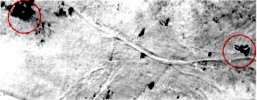 The other pilots watched from their tight circles as Lieutenant Hudner headed his Corsair toward the steep mountain slope, searching for anything resembling a level area to land. Flying into the wind and up the slope in a carrier-like approach, he settled towards the ground. It would be a planned, wheels-up crash landing. Then he was down about 100 yards slightly upslope from his friend. As he hit the rock-hard ground and bumped to a stop his thought was, "What in the hell am I doing here!" And then he was out of the cockpit and running to the side of his "brother".
The other pilots watched from their tight circles as Lieutenant Hudner headed his Corsair toward the steep mountain slope, searching for anything resembling a level area to land. Flying into the wind and up the slope in a carrier-like approach, he settled towards the ground. It would be a planned, wheels-up crash landing. Then he was down about 100 yards slightly upslope from his friend. As he hit the rock-hard ground and bumped to a stop his thought was, "What in the hell am I doing here!" And then he was out of the cockpit and running to the side of his "brother".
Jesse Brown was in horrible pain. Tom could see it in his eyes and on his face. But Jesse remained calm, speaking to his wingman from time to time. Lieutenant Hudner could see that the brave Ensign was indeed trapped. The buckling cockpit had pinned him beneath the hard metal of the instrument panel. And Jesse was cold. He had been on the ground for almost half an hour, exposed to sub-freezing temperatures at more than a mile above sea level. In working to free himself from the wreckage he had removed his flight helmet exposing his head to the wintry blasts that hung over the mountain. He had also removed his gloves to release himself from his parachute harness. They dropped from his numb fingers. He had struggled to retrieve them but, pinned as he was, they were out of his reach. "By the time I got there," Hudner says, "his hands were like claws, totally frozen."
Lieutenant Hudner worked to release his friend from the metal tomb but to no avail. The wreckage held him too tightly. The helicopter that would be coming to rescue the two men would be useless unless they could free the trapped man. He knew his radio was still operational, knew also that by turning on the battery to power it, he risked igniting the fuel that leaked about the plane. So once again Lieutenant Hudner did the wrong thing because it was the right thing to do. Returning to his own Corsair he powered the radio and told the rescue helicopter to bring an ax to chop the wreckage away and free Jesse, as well as a fire extinguisher.
After sending the message, Tom Hudner returned to his friend's side. He had retrieved a wool scarf and cap that he had carried in his flight suit for emergencies, and now he gently lowered the cap over Jesse's head. "Wrapping the scarf around his frozen hands was more of a gesture than a remedy," Hudner says. "Everyone knows when limbs are already frozen that a wrap won't warm them back up. But it was all I could do."
Jesse was still conscious and spoke from time to time, but he spoke very slowly. It was apparent that his body was broken up inside, but Jesse never cried out or complained. Meanwhile, Tom Hudner began to scoop up the cold snow and tossed it at the spot where the smoke was coming from under the cowling, but the smoke didn't diminish. After about half an hour both men could hear the throb of the rescue helicopter arriving, then landing on the steep slope. Marine Lieutenant Charles Ward brought the fire extinguisher and ax to Tom Hudner. The extinguisher was small and quickly expanded. Then the two men began frantically beating against the metal cockpit with the ax without any effect. It was getting dark, time was running out. Jesse spoke less and less frequently, more and more slowly, and began to fade in and out of consciousness as the two rescuers vainly attempted to free him. The ax simply bounced off the metal. They made no headway.
As the sunset over the cold mountain, Lieutenant Ward informed Tom that his helicopter was not equipped to fly at night. They would have to give up soon, or at the very least fly out for additional help. Everything they had done was fruitless. Perhaps if they could fly back and get torches to cut the metal.
Lieutenant Hudner sensed Jesse was trying to say something and leaned closer to his friend. "If I don't make it," he whispered, "Please tell Daisy I love her."
Tom Hudner promised his friend that he would. Lieutenant Ward informed Tom it was time to go, that nothing more could be done. In the fading twilight, Lieutenant Thomas Hudner peered once more into the shattered cockpit of the Corsair. Jesse no longer spoke. He was unconscious and fading fast. Tom Hudner had crashed his plane on a mountainside to rescue a friend, something the Navy would certainly frown on. In the end, it had been for naught. As the helicopter lifted off Thomas Hudner looked back one last time at the crash site, and Jesse Brown sitting motionless in the open cockpit.
"One of the worst things, when something has happened to you, is the feeling that you're alone," Thomas Hudner later said. "Just being with him to give him as much comfort as we could be worth the effort." Tom Hudner is also quick to point out that he would have done the same for any of the other men in the squadron, and they for him. "I just happened to be the one that went on that day," he says. "If it hadn't been me, it would have been one of the others (pilots)."
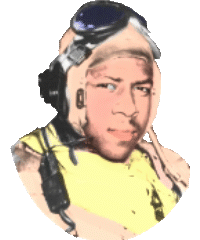 In the days that followed, it became impossible to recover either Jesse Brown's body or the two downed Corsairs. When Tom returned to his ship, he reported the circumstances to the ship's captain. Then, to prevent the Chinese from gaining access to the crash site, the captain dispatched a flight of aircraft to the mountainside where they dropped napalm on the two aircraft and Jesse's body. It was the most dignified burial the men of Fighter Squadron 32 could have afforded their brother. As the napalm blanketed the hillside, Jesse and his Corsair vanished into history, a hero that we can not afford as a Nation to ever forget.
In the days that followed, it became impossible to recover either Jesse Brown's body or the two downed Corsairs. When Tom returned to his ship, he reported the circumstances to the ship's captain. Then, to prevent the Chinese from gaining access to the crash site, the captain dispatched a flight of aircraft to the mountainside where they dropped napalm on the two aircraft and Jesse's body. It was the most dignified burial the men of Fighter Squadron 32 could have afforded their brother. As the napalm blanketed the hillside, Jesse and his Corsair vanished into history, a hero that we can not afford as a Nation to ever forget.
Tom Hudner and Lieutenant Ward landed in Hagaru-ri at the foot of the Chosin reservoir through which thousands of Marines were withdrawing from an overwhelming Chinese force, then flew to Koto-ri where the weather held them for three days. When the weather lifted, Tom was flown back to the USS Leyte, where he was informed upon arrival that Captain Thomas Sisson wanted to see him on the bridge. Lieutenant Hudner approached uncertainly, convinced that he was about to be reprimanded for his actions. "There are still people who think I did the wrong thing," he told me recently. "They say I destroyed a perfectly good, multi-million dollar fighter plane for one man. But what is a life worth!"
Captain Sisson listened to the brave Lieutenant's account of that horrible day on the mountainside and understood. Sometimes it takes more courage to do that which you know is right than to simply give in and do what others think is right. Captain Sisson recommended Navy Ensign Jesse Brown for one of our Nation's highest awards, the Distinguished Flying Cross. He submitted Jesse's wingman and friend, Lieutenant (j.g.) Thomas Hudner for the Medal of Honor.
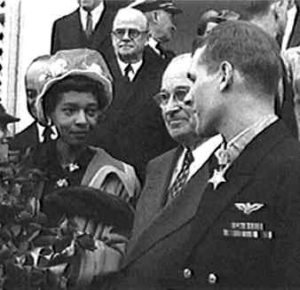 Four months later on April 13, 1951, President Harry S. Truman invited the Hudner family to the White House where he presented the Medal of Honor to Navy Lieutenant Thomas Hudner. It was a moment of great joy for the Hudner family.
Four months later on April 13, 1951, President Harry S. Truman invited the Hudner family to the White House where he presented the Medal of Honor to Navy Lieutenant Thomas Hudner. It was a moment of great joy for the Hudner family.
Attending the ceremony and standing quietly to the side holding a large bouquet of roses was a young black lady. She smiled through her tears and shook hands with Lieutenant Hudner. He had delivered the message, "Tell Daisy I love her."
When Lieutenant Hudner returned home, Fall River proclaimed "Thomas Hudner Day" and hosted a wonderful celebration. The appreciative citizens presented the young pilot with a check for $1,000, a considerable sum in 1951. Lieutenant Hudner didn't cash it. Instead, he endorsed the back and sent it to Daisy Brown who had returned to school.
On March 18, 1972, the Navy christened a new member of its fleet: USS Jesse L. Brown (DE-1089). It was the first time in our Nation's history that a Naval vessel was named for a Black American. Daisy Brown and Thomas Hudner were there to remind us all of the brave young pilots for whom it was named.
In November 1998, the first full biography of Jesse Brown was published. Written by Theodore Taylor with full cooperation by Daisy Pearl Brown Thorne and Jesse's brothers.
Devotion (2022)
In November of 2022, Sony Pictures Entertainment released the film "Devotion", which tells the incredible true story of Jessey L. Brown and Thomas Hudner, two naval aviators who forged an unbreakable bond. Brown, the first African-American to be trained as a Navy pilot, and Hudner, who risked his life in a daring rescue mission, form a remarkable friendship that changed the course of history. This inspiring story of courage and determination reminds us of the importance of heroism and friendship.
About the Author
Jim Fausone is a partner with Legal Help For Veterans, PLLC, with over twenty years of experience helping veterans apply for service-connected disability benefits and starting their claims, appealing VA decisions, and filing claims for an increased disability rating so veterans can receive a higher level of benefits.
If you were denied service connection or benefits for any service-connected disease, our firm can help. We can also put you and your family in touch with other critical resources to ensure you receive the treatment you deserve.
Give us a call at (800) 693-4800 or visit us online at www.LegalHelpForVeterans.com.
This electronic book is available for free download and printing from www.homeofheroes.com. You may print and distribute in quantity for all non-profit, and educational purposes.
Copyright © 2018 by Legal Help for Veterans, PLLC
ALL RIGHTS RESERVED


